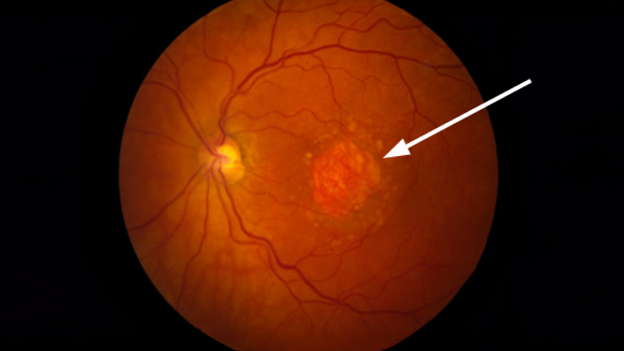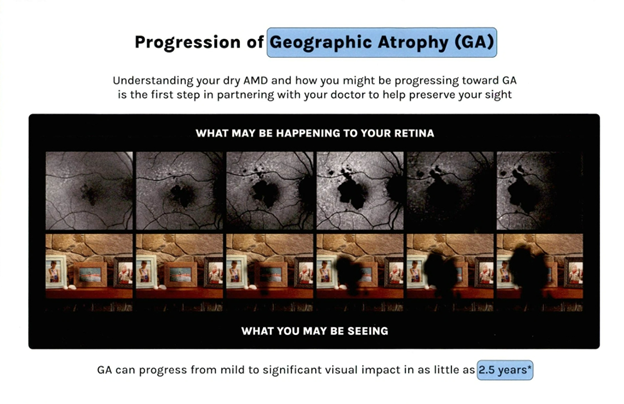Geographic Atrophy
Learn about the advanced form of dry age-related macular degeneration, called geographic atrophy.

Some patients with age-related macular degeneration (AMD) will develop geographic atrophy, which refers to regions of the retina where cells waste away and die (atrophy). Sometimes these regions of atrophy look like a map to the doctor who is examining the retina, hence the term geographic atrophy. The regions of atrophy result in a blind spot in the visual field. Geographic atrophy can affect one or both eyes, and a patient with geographic atrophy in one eye is more likely to develop it in the other.

Symptoms of Geographic Atrophy
- The initial symptom may be found during reading, when one or several letters in a word are “missing.” Or, when looking at faces, a small part of the face cannot be seen.
- Usually, once geographic atrophy starts, the region of atrophy expands slowly over several years until the central vision is lost and vision is about 20/200. It does not normally affect peripheral vision.
Wet AMD and Geographic Atrophy
Patients with another form of advanced AMD called wet AMD can sometimes also have geographic atrophy before, during, or after they have the wet form of AMD. The two forms of AMD are not mutually exclusive.
Diagnosing Geographic Atrophy
How can you tell if you have geographic atrophy? It can be diagnosed by an ophthalmologist during a dilated exam and/or with retinal imaging. In a dilated exam, geographic atrophy appears as a patch of retina that’s missing its dark melanin pigment. Imaging techniques including retinal color photographs, optical coherence tomography (OCT), or autofluorescence photographs can also be used to detect GA. Read more about the eye exam for macular degeneration.
Treatment
The first treatments for geographic atrophy were approved by the U.S. Food and Drug Administration in 2023. The first, Syfovre, was approved in February 2023, followed by Izervay in September 2023. Both treatments slow the progression of the disease by targeting inflammation in the complement pathway system in the eye.

Recent Comments